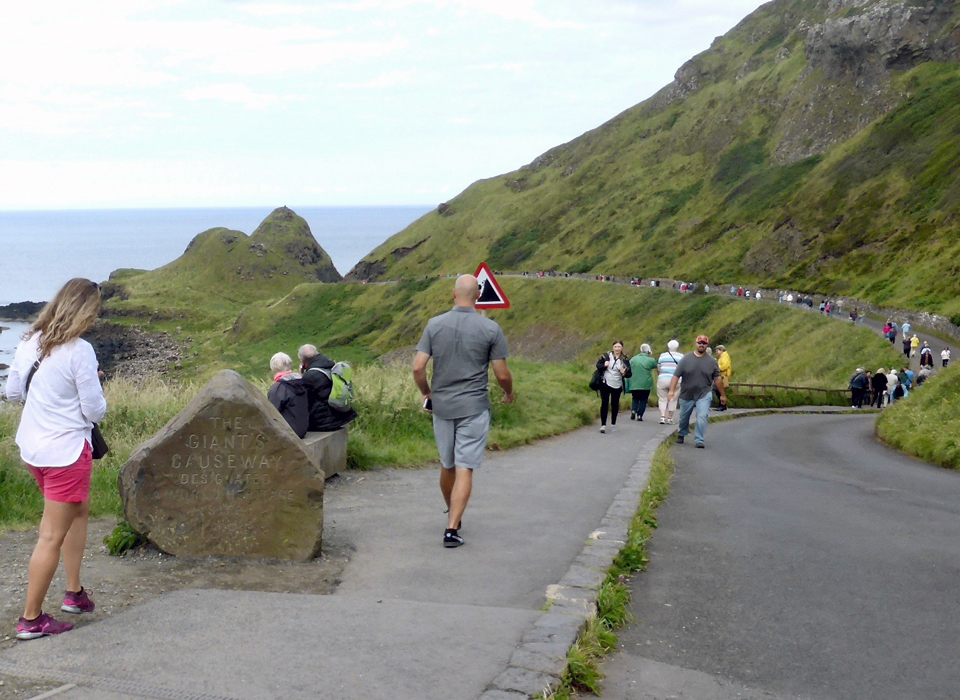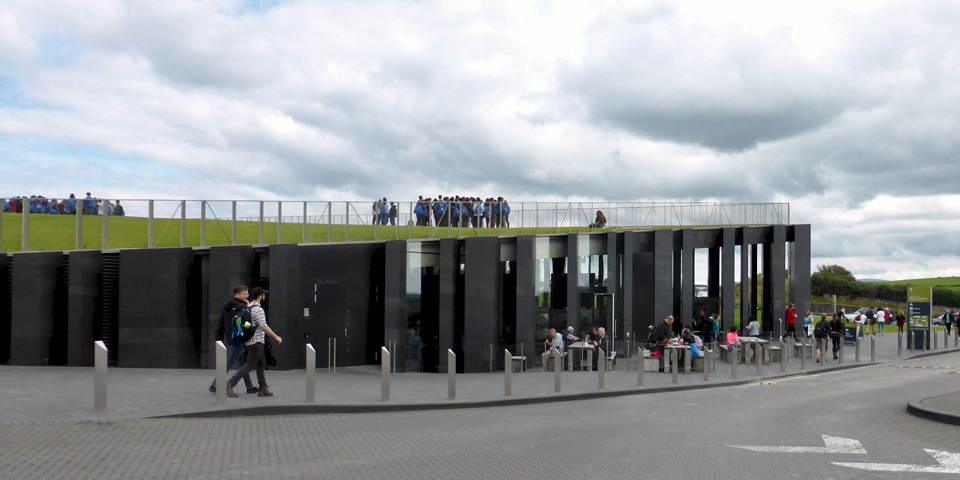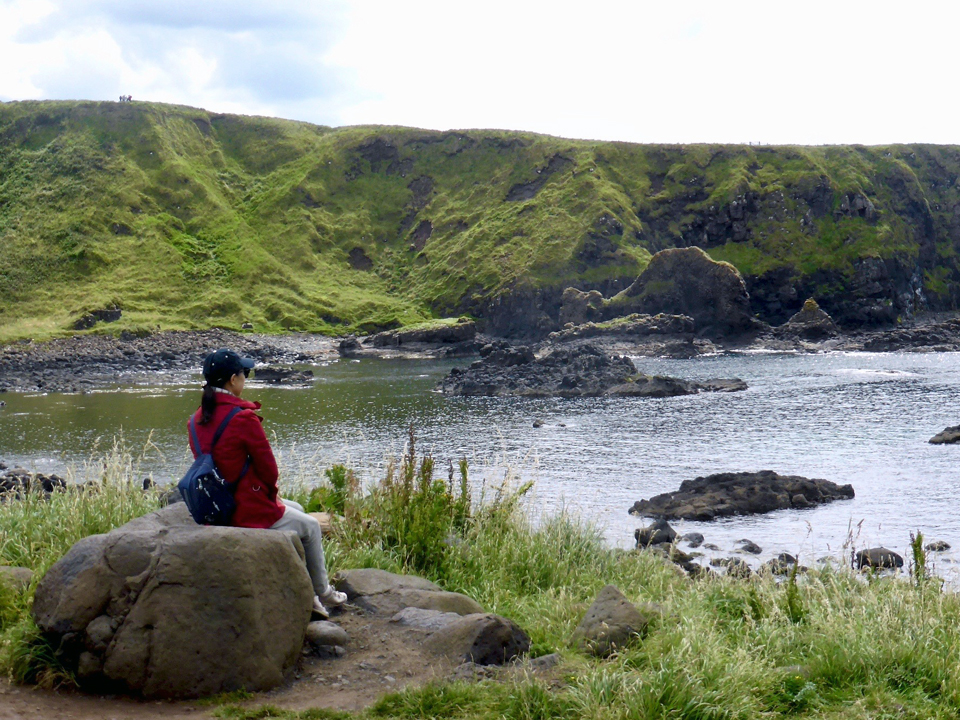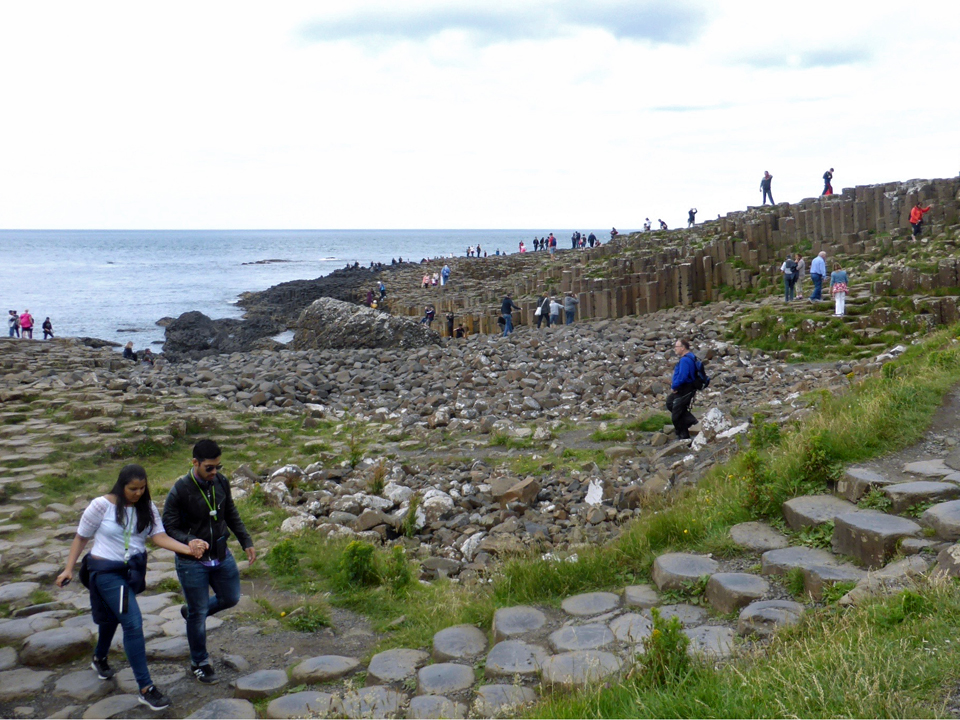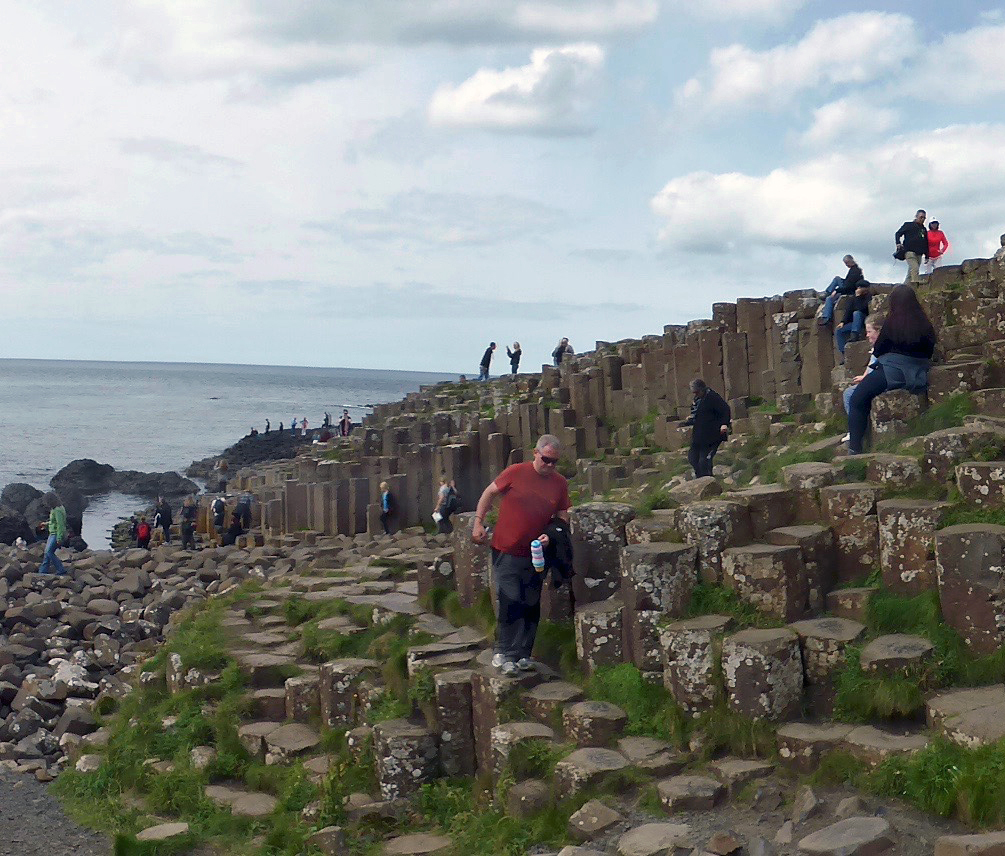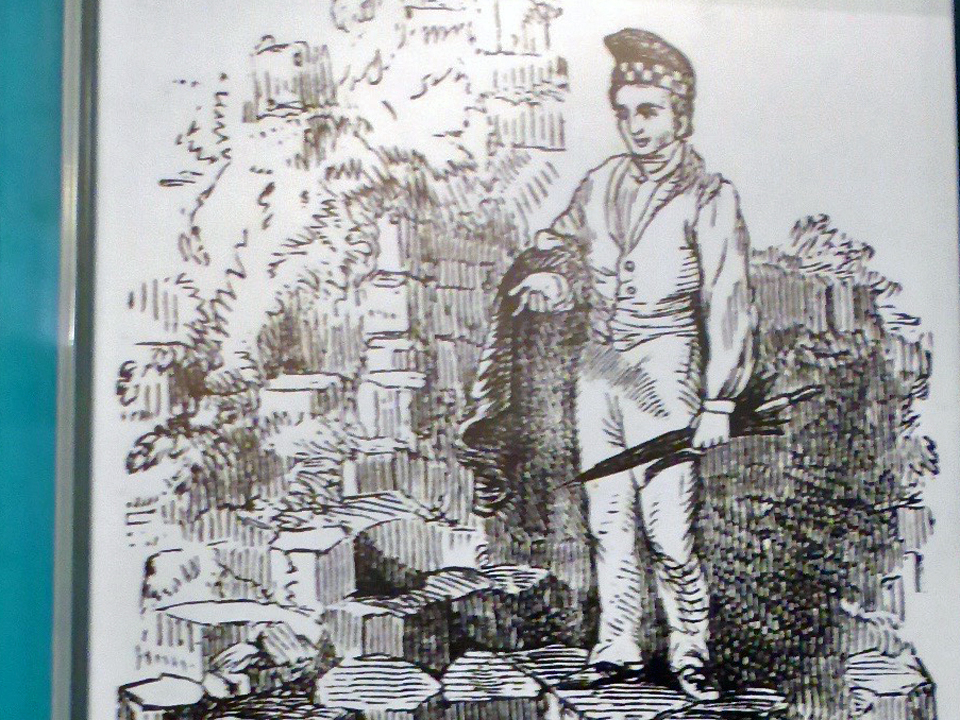Northern Ireland: The Giant’s Causeway
The Giant’s Causeway, Northern Ireland
The Giant’s Causeway is a UNESCO World Heritage Site and nominee for the Eighth Wonder of the World.
The Visitor Centre
The Visitor Centre is built of basalt columns, walls of glass, and a grass roof in a design that blends into the landscape. Plan to spend some time there to get the most from your experience. It is also a good place to find high quality local crafts.
Giant’s Causeway Visitor Center
The folklore and science of the area are brought to life here and this creates a richer experience. An audio guide is worthwhile for a self-paced exploration of the area, which includes unique wildlife habitats.
Allow enough time to enjoy the scenery.
overlooking the legendary camel at the Giant’s Causeway
The Giant’s Causeway, Northern Ireland
Over 40,000 exposed vertical hexagonal basalt columns soar as high as 200’ above sea level.
The Science
Scientists see it as the result of the ocean’s pounding against a 60 million year old volcanic rock formations. They note that the fine-grained basalt is lava that spread slowly over the area and cooled.
Look around and you will also see tuff, formed of ash and rock after a volcanic explosion. The rust-colored rock is laterite, rich in iron and from the headlands.
The Giants
Local legend describes the landscape as the work of warring giants.
giant at display at the Visitor Centre, Giant’s Causeway, Northern Ireland
It is said that Scottish giant Benandonner’s insults so angered local giant Finn McCool that he threw chunks from the Irish cliffs into the sea as a pathway for a confrontation. Finn ran back home when he realized that Benendonner was bigger and stronger, but Benendonner followed in pursuit.
Finn’s clever wife quickly disguised him as a baby. When Benandonner arrived she told him that Finn was out tending the cows.
Benandonner feared the size of a father of so enormous a baby. He used great force as he ran home, destroying the pathway so Finn could not follow him.
Now you must visit the island of Staffa on the Outer Hebrides Islands to see the other end of the causeway.

